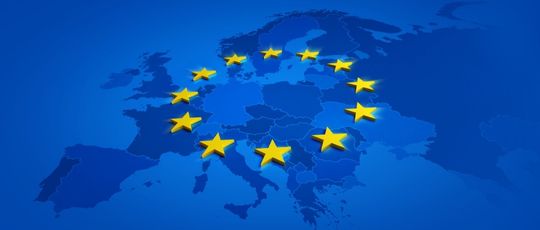For WorldatWork Members
- 20 Tips for Designing Inclusive Family Care Benefits, Workspan Daily Plus+ article
- Bullying & Sexually Marginalized Workers: A Threat to the Employee Value Proposition, Journal of Total Rewards article
- Taking Progressive Steps in Gender-Inclusive Benefits, Workspan Magazine article
- 5 Minutes With ... David Glasgow, Executive Director, Meltzer Center for Diversity, Inclusion and Belonging, NYU, Workspan Magazine article
For Everyone
- Visibly Supporting LGBTQ+ Workforce Can Be Powerful Recruiting Tool, Workspan Daily article
- Build an Inclusive Workplace for LGBTQ Employees, Workpan Daily article
- Creating Equity for Your LGBTQ+ Workforce: A Q&A with a Corporate VP, Workspan Daily article
- What Employers Can Do About the LGBTQ+ Pay Gap, Workspan Daily article
- Address Mental Health Disparities in Your Workplace, Workspan Daily article
Feeling like you belong at your job is essential to every employee, but for many professionals that identity as lesbian, gay, bisexual, transgender or queer (LGBTQ+), that is not always easy. Only 35% of surveyed LGBTQ+ professionals feel completely safe bringing their whole selves to work, according to a new LinkedIn report titled “The Belonging Blueprint”.
And in a global study conducted by Coqual, the nonprofit think tank found that many LGBTQ+ professionals across Brazil, India, South Africa, the United Kingdom and the United States still feel the need to downplay who they are at work.
“From 36% of U.S. LGBTQ+ professionals to 78% in India, [these workers] say there is pressure to stay closeted,” said Emilia Yu, the co-executive director of Coqual’s Global Lab. “This climate of concealment stems from persistent workplace cultures that implicitly signal: You must be straight to succeed.”
With Gallup reporting 9.3% of U.S. adults identifying as lesbian, gay, bisexual, transgender or something other than heterosexual in 2024, LGBTQ+ inclusion is no longer a niche issue for organizations to address — it is a universal matter.
Access a bonus Workspan Daily Plus+ article on this subject:
Impacts to the Workplace
The Coqual data showed LGBTQ+ professionals are sexually harassed and assaulted, bullied, policed, and invalidated daily. The report said these workers field invasive and inappropriate questions and hear harmful stereotypes and misinformation about their community, and when LGBTQ+ professionals speak up about these violations, colleagues get defensive and accuse them of being oversensitive.
According to Yu, discrimination doesn’t stop at the office door or the Zoom waiting room.
“Our findings show that in the U.S., more than 1 in 5 LGBTQ+ professionals (21%) say societal discrimination against their community severely impacts their mental health,” she said. “A similar proportion say such discrimination strongly impacts where they choose to live (22%) and work (20%).”
When LGBTQ+ professionals encounter discrimination or harassment at these levels, it can significantly hinder their ability to fully engage in their work, affecting productivity, innovation and career development, said Farzeen Mawji, the inclusion and diversity national practice leader at Gallagher, a risk management and consulting firm.
“Much of their energy is diverted toward navigating environments that may not feel psychologically or physically safe,” he said. “When comparing the career trajectories of individuals who feel secure in their workplaces to those who do not, we may observe substantial disparities in representation at higher organizational levels over time. This gap is not necessarily due to a lack of skills or capabilities but may instead be linked to the limited energy these individuals have to pursue the development opportunities they desire.”
Yu added LGBTQ+ professionals often feel the need to alter their appearance, language or personal disclosures. For instance, the Coqual study found one-third of U.S. LGBTQ+ professionals and 78% of those in India change their appearance to fit in, and many omit the names and pronouns of their partners to conceal their sexual orientation or avoid these subjects altogether.
According to Steven Krzanowski, a senior consultant with HR consulting firm OneDigital, organizations that do not strive to intentionally create workplace environments where employees can show up as their authentic selves or do not focus on building higher levels of psychological safety may have lower rates of staff engagement, retention and collaboration.
“When microaggressions, exclusionary behaviors or harassment go unchecked, issues arise,” he said. “This can lead to staff feeling undervalued or misunderstood, decreasing morale. When benefits do not adequately meet individual or family needs, it can create additional financial restraints. Lastly, when there is a lack of mentorship or inequitable pathways for promotion, it can lead to disengagement.”
Promote Inclusion Early, Then Maintain It
Fifty-seven percent of workers in a recent Monster.com study said their employers don’t have an LGBTQ+ employee resource group (ERG) or equivalent support group. That can present a missed opportunity for potential new hires.
“Publicizing inclusive policies, LGBTQ+ ERGs, and LGBTQ+ and trans-inclusive benefits sends a strong signal to potential candidates that the organization is not just safe, but affirming,” Yu said. “In regions where public stances may be sensitive, tailored, low-profile advocacy still demonstrates internal values.”
Prospective employees are looking for signs of inclusivity in various aspects of an organization, such as its website, marketing materials, the language used in job postings and throughout the interview process, said Mawji.
“It’s crucial to demonstrate genuine inclusion through tangible actions,” he said. This can include:
- Asking individuals for their preferred pronouns.
- Ensuring that benefits plans are inclusive of diverse practitioners who reflect the plan member’s lived experiences and intersectionality.
- Offering plans that cover a variety of family-building options.
- Designing onboarding processes that are not solely based on heteronormative assumptions.
But, inclusion can’t stop at the onboarding stage. Yu said employers should maintain consistent, year-round allyship. That can include offering accessible educational materials, like pronoun guides and myth-busting resources from trusted organizations, and auditing gaps between anti-discrimination policies and actual practice to ensure such policies are not only written but enforced consistently.
As for leadership, Yu said organizations can offer bystander intervention and allyship training to help managers recognize and address bias when it arises, and advised to practice inclusive language and behavior with confidence. Additionally, employers can provide up-to-date educational resources that explain evolving LGBTQ+ terminology, as well as the legislative and social risks LGBTQ+ employees may face in various regions.
Accountability mechanisms also play a big role, Yu noted. “Inclusive leadership that is integrated into performance evaluations ensures that inclusive behavior is not only encouraged but expected,” she said. “These practices help equip leaders with the tools to be not only supportive allies, but also effective advocates.
Krzanowski offered several ways managers and leaders can bolster genuine support:
- Invest in training to better understand LGBTQ+ identity and how to identify potential bias in the workplace.
- Focus on creating high levels of psychological safety at the department level and organizationwide.
- Invest in skill-based training that focuses on identity-conscious supervision.
- Help connect LGBTQ+ staff to internal or external resources, as needed.
- Provide educational opportunities and programming.
- In one-on-one meetings, have intentional conversations that showcase authenticity and build trust. Become invested in your staff holistically.
- Be aware and mindful of societal influences and world events that impact LGBTQ+ identities. Provide space, as needed.
- Be flexible when appropriate, recognizing the needs of different family structures.
Inclusion Today
Even as organizations dismantle diversity, equity and inclusion (DEI) initiatives, inclusion should remain a strategic imperative, said Yu.
“Organizations should collaborate across HR, DEI, legal and compliance teams to discern what is legally required versus what is politically pressured — especially in volatile regions,” she said. “Overcompliance can silence critical inclusion efforts.”
Yu noted embedding inclusion into core operations— from measurable leadership expectations to product design to supply chain practices — can keep equity alive even when DEI departments are under scrutiny.
“ERGs can be powerful advocates internally, and when well-resourced and supported, help ensure LGBTQ+ equity stays on the leadership agenda,” she said. “The most resilient organizations treat inclusion not as optional but as integral to business continuity and growth.”
Even though the term “DEI” has become politicized and divisive, particularly in the U.S., Mawji said many organizations are evolving to retain the successful aspects of past DEI efforts while addressing gaps that may have left some feeling disenfranchised or overlooked.
Organizations can still foster more inclusive workplaces in holistic and sustainable ways, he said, such as:
- Actively navigating unconscious bias.
- Eliminating discriminatory recruitment and succession practices.
- Maintaining a continuous feedback loop between employers and employees.
Beyond Pride Month
To avoid performative allyship, Yu said public messaging and internal actions must be aligned.
“Flying rainbow flags is a powerful symbol of solidarity, especially now, but without corresponding culture work and structural change, it can undermine trust among employees and stakeholders,” she explained.
To demonstrate meaningful and sustained allyship, Yu said organizations should actively monitor the social and political landscape and respond thoughtfully during pivotal moments for LGBTQ+ communities — whether through public statements, reallocation of resources or visible acts of solidarity.
“These timely and intentional actions signal that inclusion is not confined to Pride Month but is embedded in the organization’s values and prioritized by senior leadership year-round,” Yu said.
Krzanowski advised employers to put an emphasis on creating a people-centered culture, focusing on communication practices and equitable decision-making.
“If your organization is not gathering formal and informal insight into your employees’ experiences, start now,” he said. “Pulse surveys and focus groups are a great way to ask about how your staff is experiencing your environment, understanding needs and developing solutions. … Tie your inclusion initiatives and goals into your business solutions and strategy. What gets measured, gets done.”
In addition, be specific on how you want your organization to show up for your LGBTQ+ staff by being transparent and showcasing humility, Krzanowski said.
“Share the why, what and how [to explain the manner in which] your actions will result in sustained organizational change,” he said. “Name your organization’s challenges, past gaps and welcome feedback. For example, instead of saying ‘We support Pride,’ say, ‘We know our workplace has not always felt safe and welcoming for our LGBTQ+ staff. Here is what we will be doing differently, and here is how you can hold us accountable throughout the process because your ability to thrive here matters.’”
Editor’s Note: Additional Content
For more information and resources related to this article, see the pages below, which offer quick access to all WorldatWork content on these topics:







